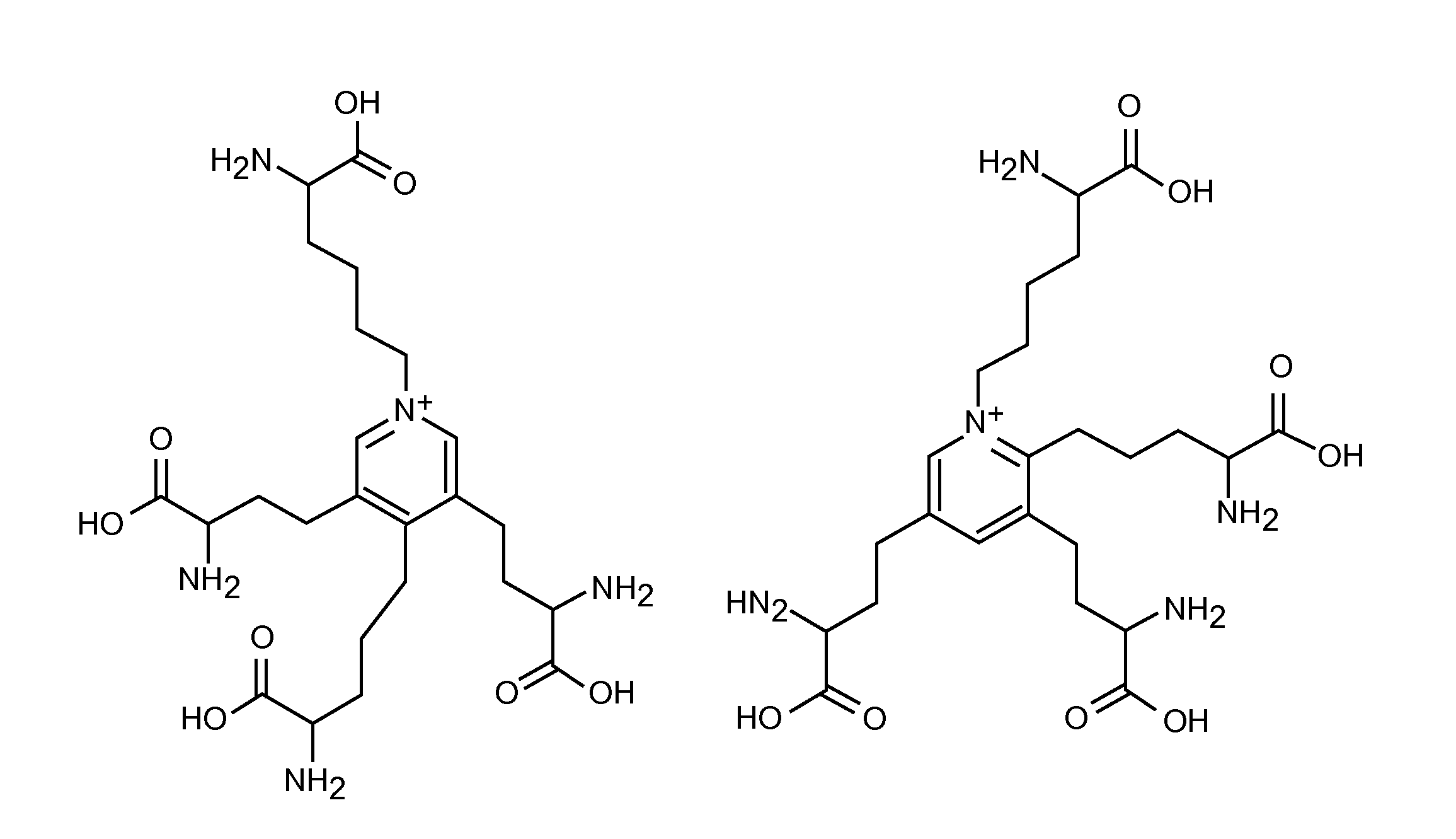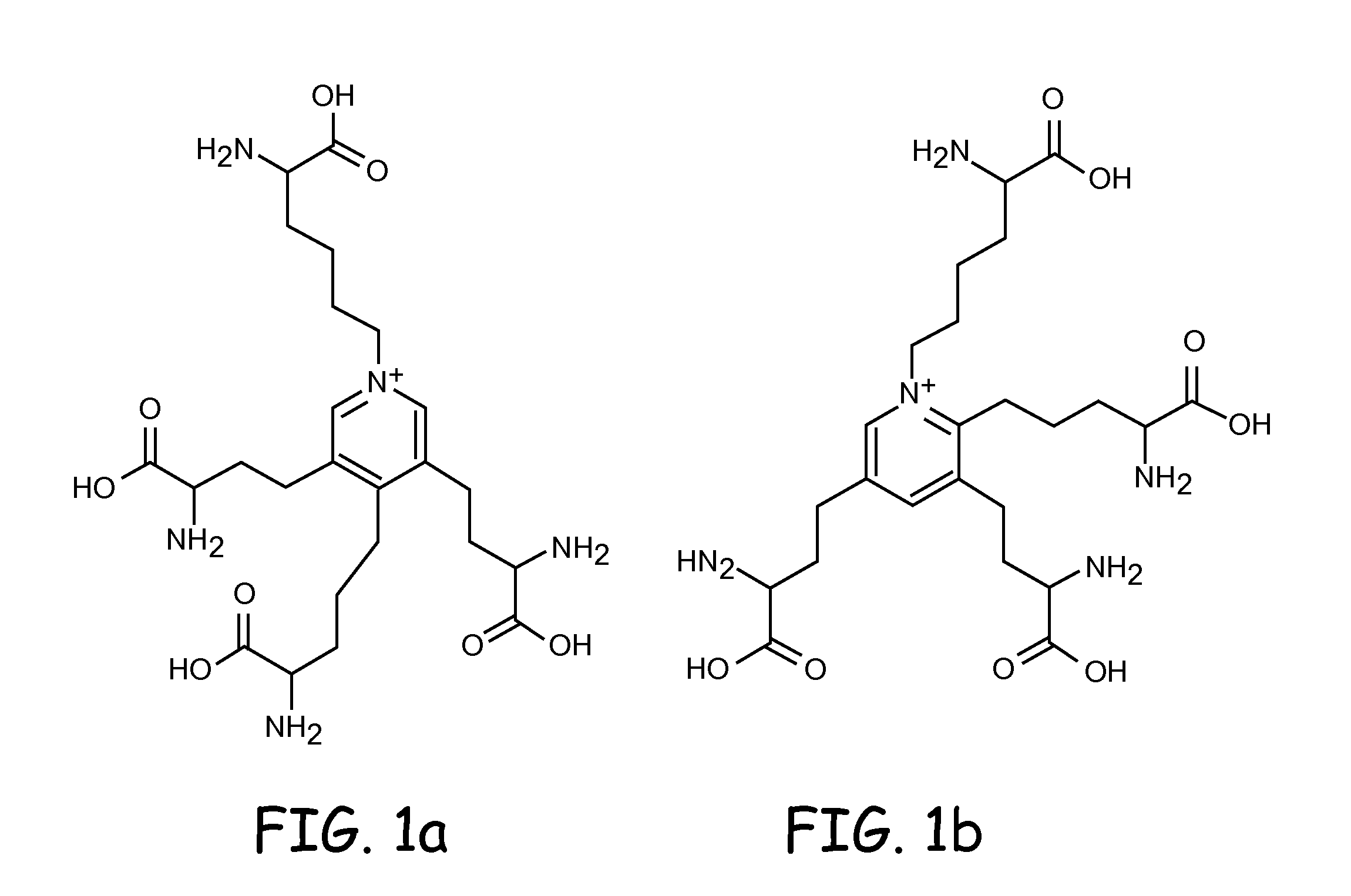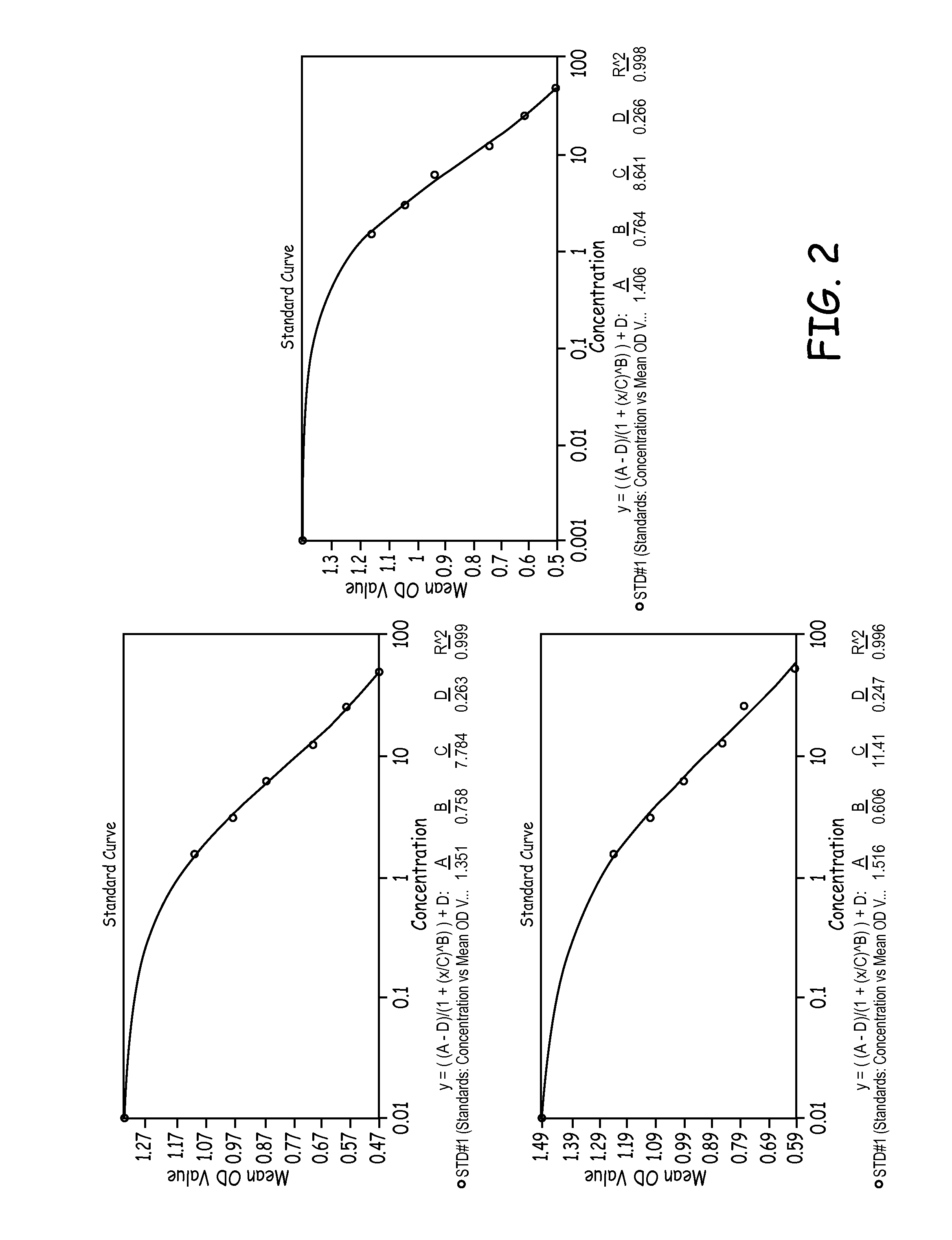Elisa assay kit, elisa for determining desmosine levels from urine samples and diagnostic urine assays for aneurysms
a technology of urine samples and assay kits, which is applied in the direction of chemiluminescene/bioluminescence, instruments, material analysis, etc., can solve the problems of large health risks, large bleeding, and elisa assay kits, so as to achieve effective segregation
- Summary
- Abstract
- Description
- Claims
- Application Information
AI Technical Summary
Benefits of technology
Problems solved by technology
Method used
Image
Examples
example 1
Synthesis of Desmosine-Protein Conjugate
[0083]Desmosine was conjugated to ovalbumin using 1-ethyl-3-(3-dimethylaminopropyl)-3-carbodiimide (EDC) as the coupling agent in conjugation buffer (0.1M MES (2-[N-morpholino]ethane sulfonic acid), pH 4.9).
[0084]Ovalbumin (10 mg) was dissolved in 1 mL of conjugation buffer followed by the addition of desmosine (1.0 mg) to form a reaction mixture, into which 100 μL freshly made aqueous EDC solution (100 mg / mL) was added to initiate the coupling process. The reaction mixture was incubated for 2 hr at room temperature (RT) and then quenched by the addition of ethanolamine (1M, pH 9.8) to a final concentration of 50 mM ethanolamine. The excess ethanolamine and unbound desmosine was removed from the desmosine-ovalbumin (DOV) conjugate by dialyzing the quenched reaction mixture overnight against several changes of deionized water.
example 2
Formation of High Affinity Capture Plate
[0085]To form a high affinity capture plate, the desmosine-ovalbumin (DOV) conjugate from Example 1 was used to coat the wells of a 96 well microtiter plate. Specifically, the DOV conjugate from example 1 was dissolved in a coating buffer (0.05 M carbonate buffer, pH 10) to give a coating solution with a concentration of 1 μg / mL. The coating solution (100 μL) was pipetted into each well of the microtiter plate and incubated at room temperature for 1 h followed by washing the wells (3 times) with wash solution 200-300 μL PBS containing 0.05% Tween 20, pH 7.8). The wells were then blocked by adding 1% bovine serum albumin (BSA, 200 μL) and incubated at room temperature for 1 hr. The wells of the microtiter plate were washed once more with the wash solution 200-300 μL) to form the high affinity capture plate.
example 3
Preparation of Anti-Desmosine Antibody
[0086]Desmosine was linked to keyhole limpet hemocyanin (KLH) with glutaraldehyde yielding a KLH-desmosine conjugate that comprises about 8-12 moles of desmosine per mole of KLH. The KLH-desmosine conjugate (1 mg) was emulsified with 1 mL Fruends complete adjuvant and 1 mL saline and injected subcutaneously into rabbits. The rabbits was then boosted once a month with 100 mg of the KLH-desmosine conjugate and bled every 2 weeks after the initial injection. High titer serum usually started after 2-3 months and continued for up to a year.
[0087]Titer of the anti-desmosine antibody in the serum was measured by serially diluting the serum in PBS to form a set of diluted serum samples. The measurement of titer is described, for example, in the Immuno Assay Handbook, 3rd Edition, by David Geoffrey Wild, Elsevier Science, July 2005, incorporated herein by reference. Each of the diluted serum samples (100 μL) was then incubated in individual wells of the ...
PUM
 Login to View More
Login to View More Abstract
Description
Claims
Application Information
 Login to View More
Login to View More - R&D
- Intellectual Property
- Life Sciences
- Materials
- Tech Scout
- Unparalleled Data Quality
- Higher Quality Content
- 60% Fewer Hallucinations
Browse by: Latest US Patents, China's latest patents, Technical Efficacy Thesaurus, Application Domain, Technology Topic, Popular Technical Reports.
© 2025 PatSnap. All rights reserved.Legal|Privacy policy|Modern Slavery Act Transparency Statement|Sitemap|About US| Contact US: help@patsnap.com



